World War II in Europe erupted when the Germans attacked Poland. Germany had allies such as Italy, Hungary, Bulgaria, and Romania. Some European countries that fought against the Axis power were Britain, the Soviet Union, and France. Have a look at these stunning before and after pictures that show the destruction of war, different places, people, monuments, and the landscapes of Europe. Vote your favorites, and don’t forget to share. Also check, Europe at the beginning of 20th century
#1 German Prisoners At The Station In Bernières
#2 Aachen Rathaus
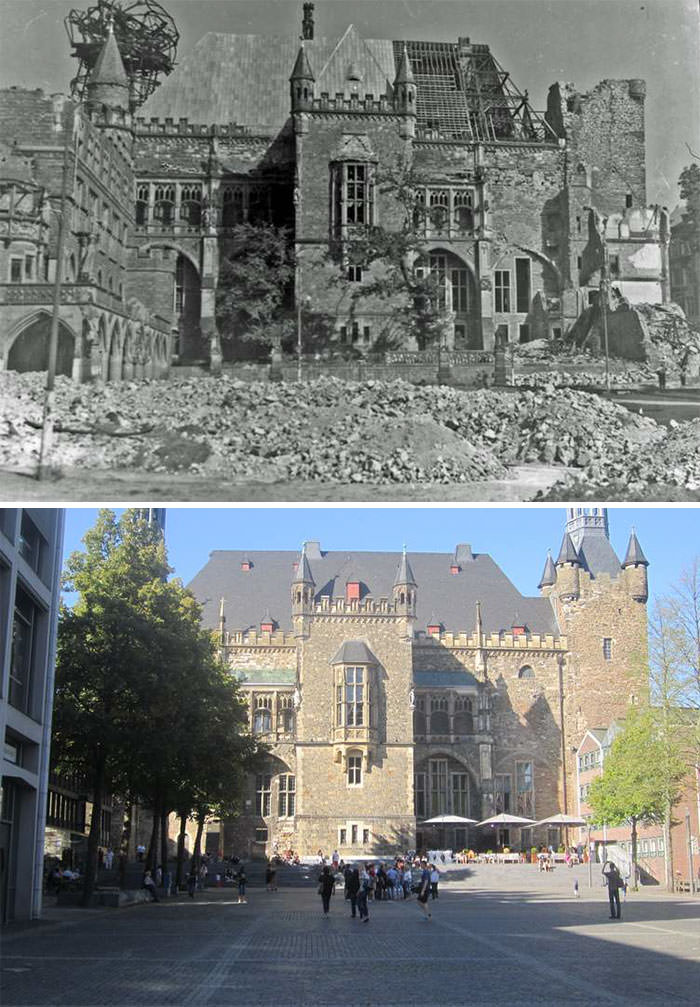
Southside of the Aachen Town Hall at Katschhof at the end of World War II. The town hall is one of the most important buildings in the historic center of Aachen. It was repeatedly rebuilt and expanded over many centuries. The oldest part of the monument is the Granusturm from the time of Charlemagne. During World War II, the town hall suffered badly from several bombing raids. On 14 July 1943, the roof and both City Hall towers burned out, the steel skeletons of the tower domes bent by the heat dominated the appearance of the town hall for a few years. Rebuilding followed in the 50s; last, the two-tower caps were finished in 1978. Before photo: Stadtarchiv Aachen / Stadtbildstelle, after photo: Nicolai Wolpert.
#3 Avenue Foch (Occupation Of Paris)
#4 Cinema In Żnin During German Occupation
#5 Notre-Dame (Liberation Of Paris)
#6 German Soldier In Alkmaar
#7 The Dam Busters
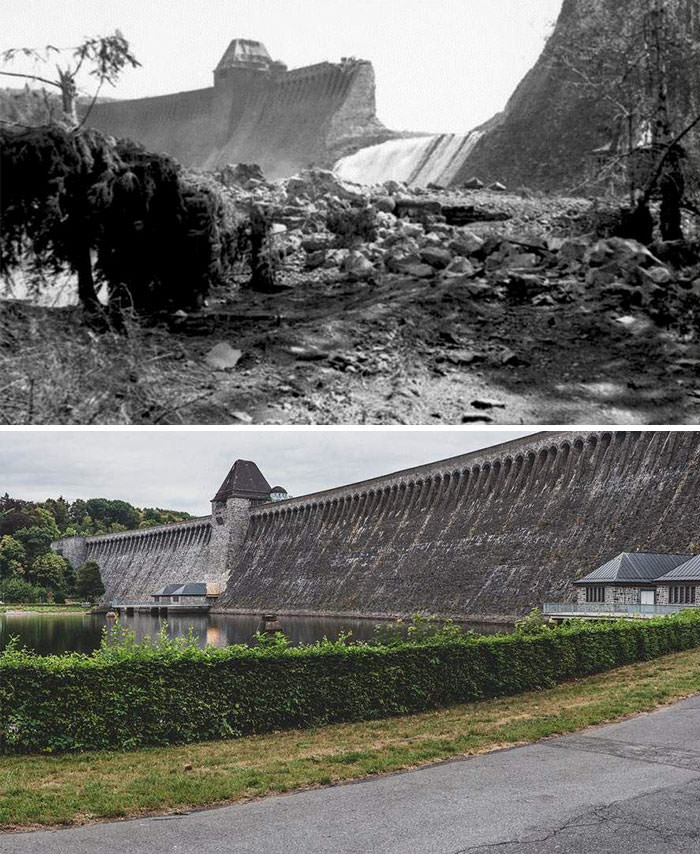
In May 1943, the Allies dropped specially developed "bouncing bombs" on select dams in Germany's industrial heartland. The Möhne dam was the hardest hit and 1600 civilians died in the flooding. The attack was dramatized by The Dam Busters (1955). Before photo: Schalber, after photo: jamesvdm.
#8 Hoofdkwartier Wehrmacht
#9 Locals Welcome The German Soldiers
#10 Opéra Garnier (Occupation Of Paris)
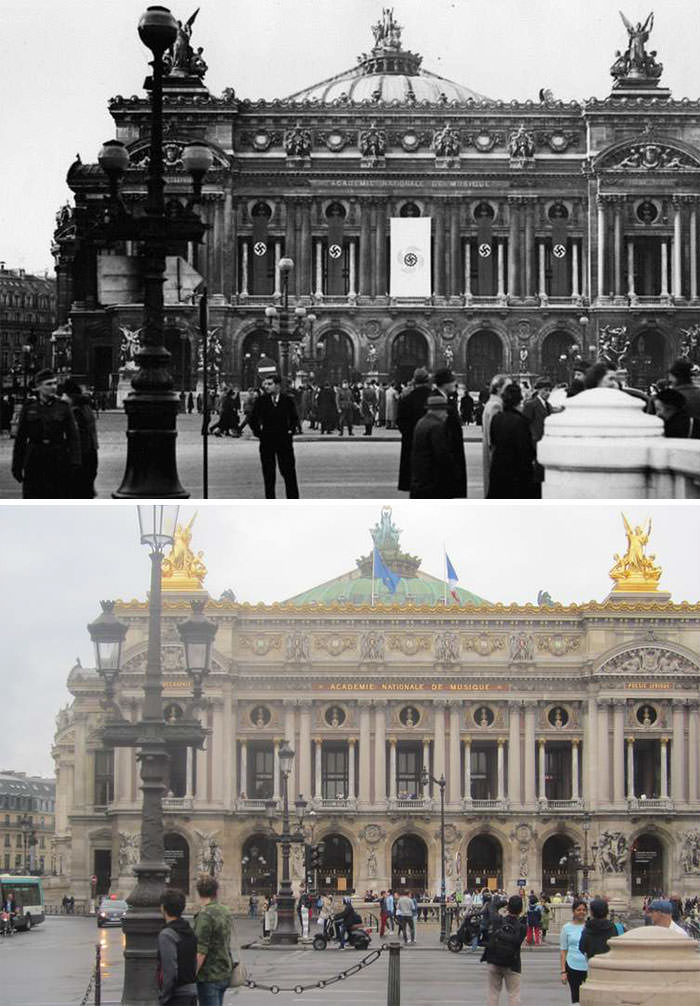
The Opera Garnier decorated with swastikas for a festival of German music during the Occupation of Paris. The Germans organized a series of concerts in the occupied city, including by the Berlin Philharmonic, conducted by Herbert von Karajan. 1941. Before photo: Deutsches Bundesarchiv, after photo: Nicolai Wolpert.
#11 View From The Castle Of Caen On The Destroyed City
#12 Siege Of Leningrad
#13 Wehrmacht Soldiers In Schagen
#14 Burning Peterhof
#15 Captured German Soldiers At Juno Beach
#16 Place De La Concorde (Liberation Of Paris)
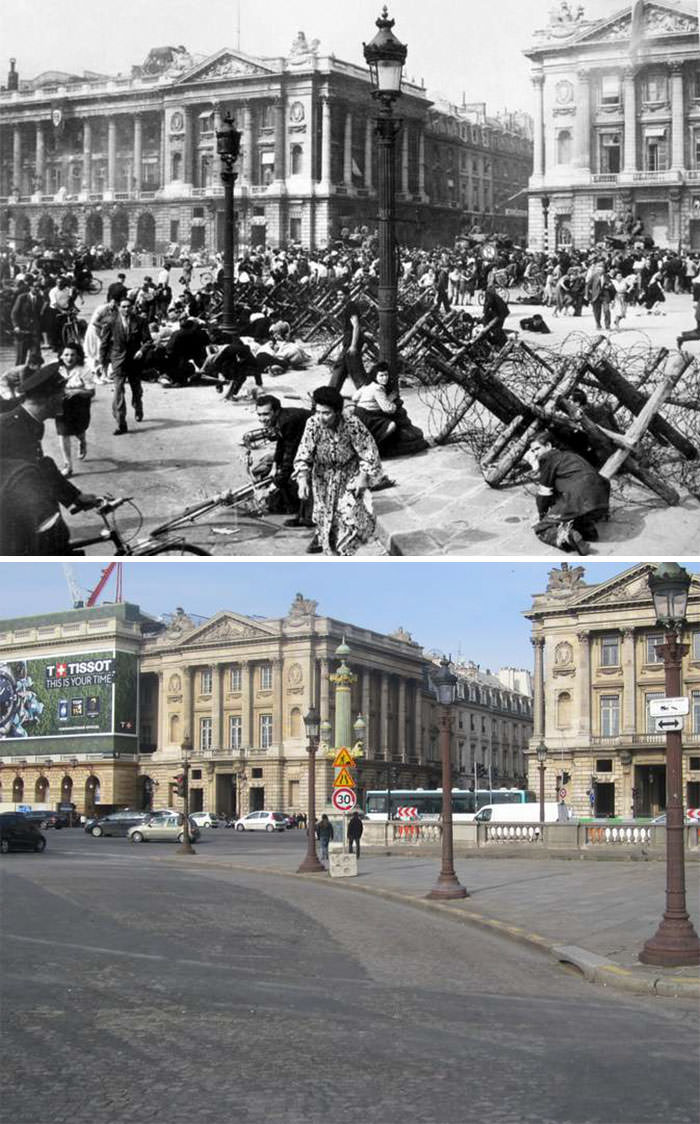
A crowd celebrates the arrival of Allied troops during a victory parade for the liberation of Paris, as suddenly shots from a sniper on one of the roofs are heard. Quickly the Parisians scatter for cover. Although the city was officially abandoned by the Germans, small bands of snipers remained active, which made the victory celebrations risky. 1944, August 29. Before photo: National Archives and Records Administration, Washington, after photo: Nicolai Wolpert.
#17 Cherbourg-Octeville
#18 Rue St. Placide
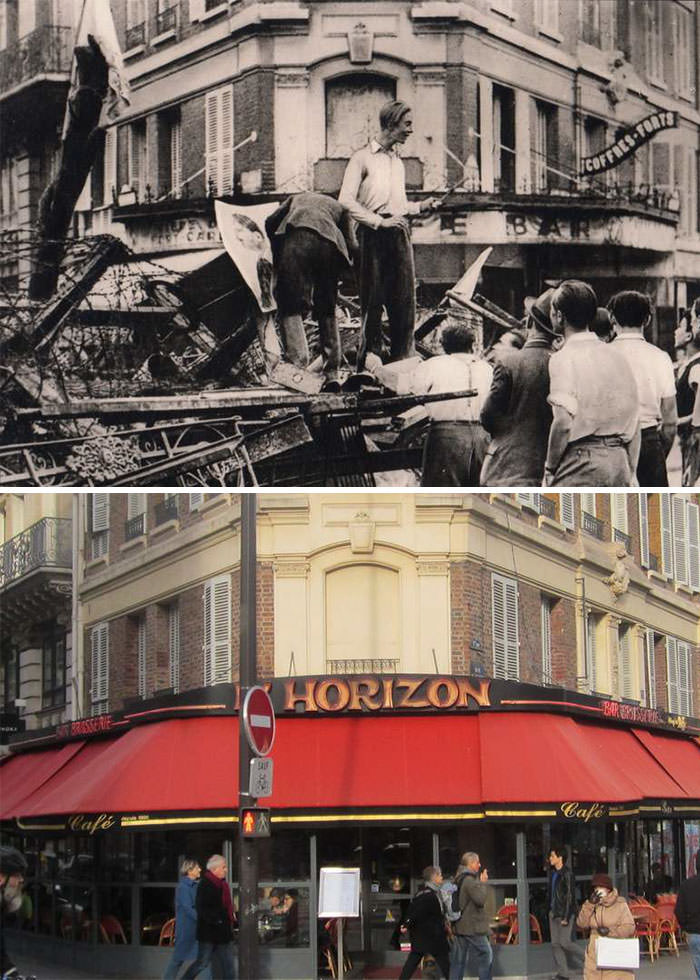
August 1944. Since 1940, Paris is occupied by German troops. As the Allied army approaches the capital, this encourages the Parisian population to resist. It comes to a general strike, followed by open revolts. Everywhere in the city (such as here in the rue St. Placide) barricades are erected, and around the 20th of August, the Resistance has taken control of the city. Although militarily inefficient, these barricades had a symbolic character for the Paris uprising. Before photo: Jean-Jacques Lebel, after photo: Nicolai Wolpert.
#19 Villa Denise Et Roger At Juno Beach
#20 San Lorenzo, Rome
#21 Palais Chaillot
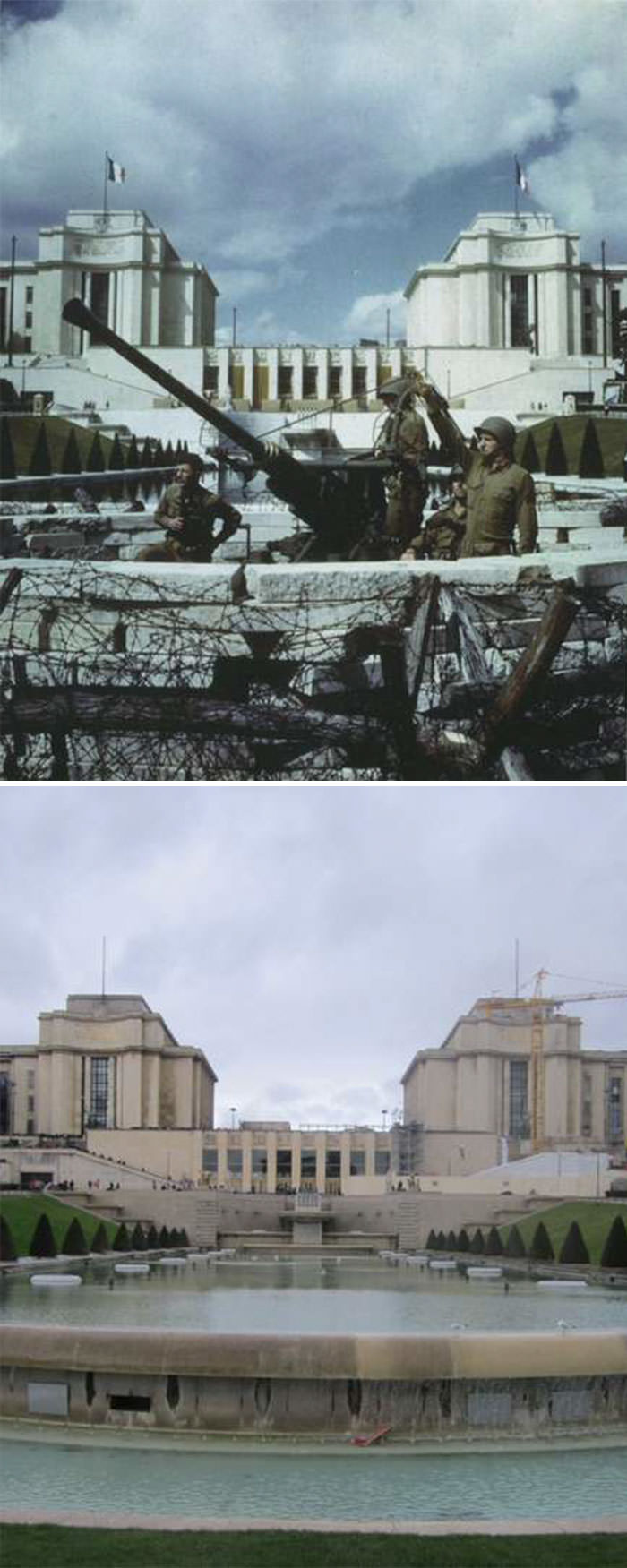
Paris in September 1944, shortly after the recapture. To protect against potential German counterattacks, an anti-aircraft gun is provisionally installed by American soldiers in the park of the Palais de Chaillot. Before photo: anonym, Agence Gamma Rapho, after photo: Nicolai Wolpert.
#22 Rentforter Straße
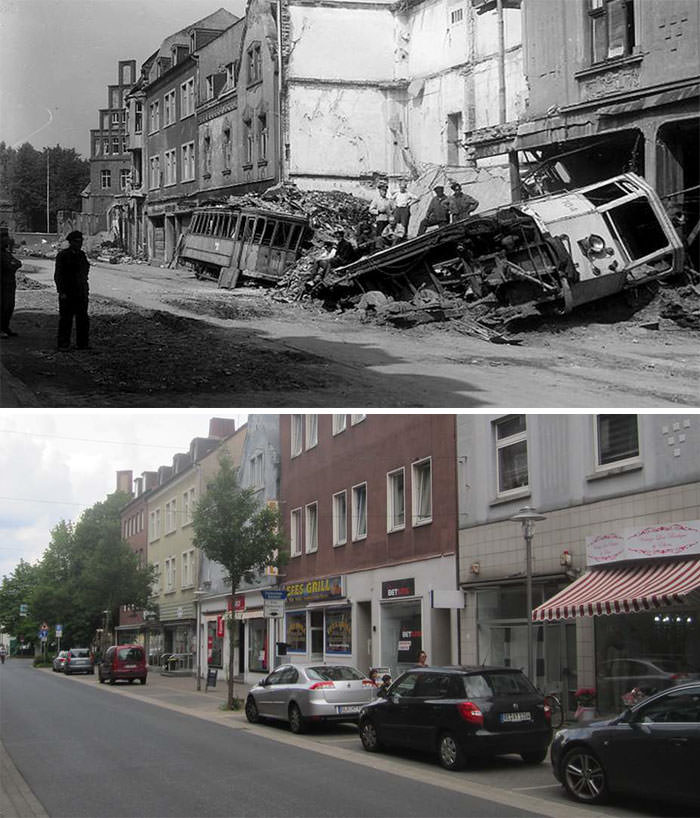
Destroyed tram and houses in the Rentforterstrasse in Gladbeck, end of the Second World War. The house with the gabled facade in the background is the main entrance of the St. Barbara hospital. Today there are no more tramways in Gladbeck. 1945. Before photo: Vestische Straßenbahnen GmbH, after photo: Nicolai Wolpert.
#23 Pont Neuf/Quai De Conti (Liberation Of Paris)
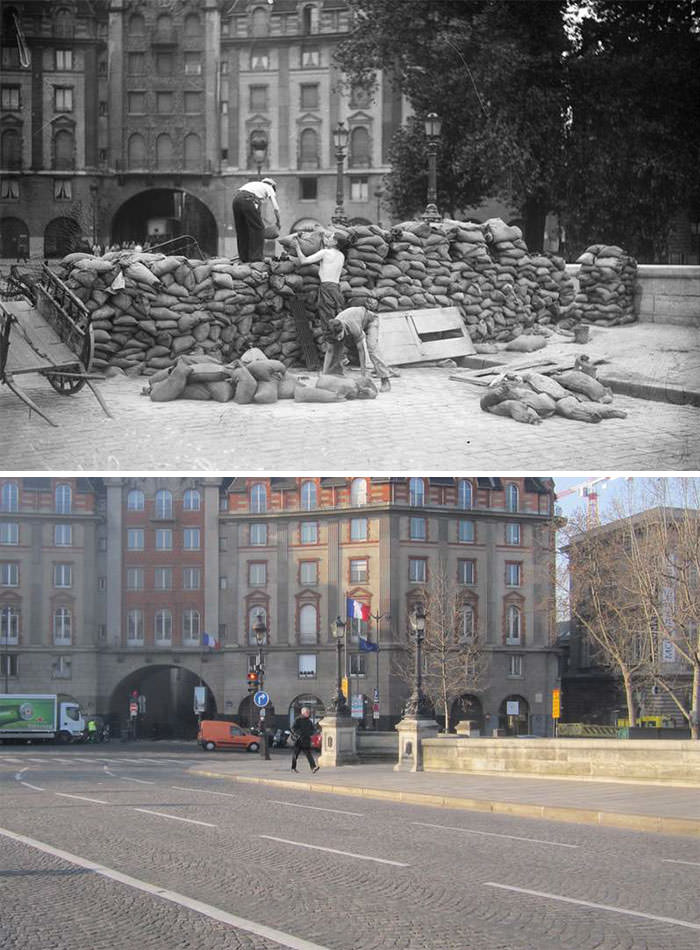
Barricade on the Pont Neuf at the intersection with the Quai de Conti, August 1944. Since 1940, Paris had been occupied by German troops. As the Allied army approached the capital, this encouraged the Parisian population to resist. It came to a general strike, followed by open revolts. Everywhere in the city barricades were erected, and around the 20th of August, the Resistance took control of the city. Although militarily inefficient, these barricades had a symbolic character for the Paris uprising. Before photo: Bibliothèque Nationale de France, after photo: Nicolai Wolpert.
#24 San Lorenzo, Rome After The Bombing
#25 Old Bunker Alkmaar Flower Shop
#26 The Battle Of Porta San Paolo, Rome
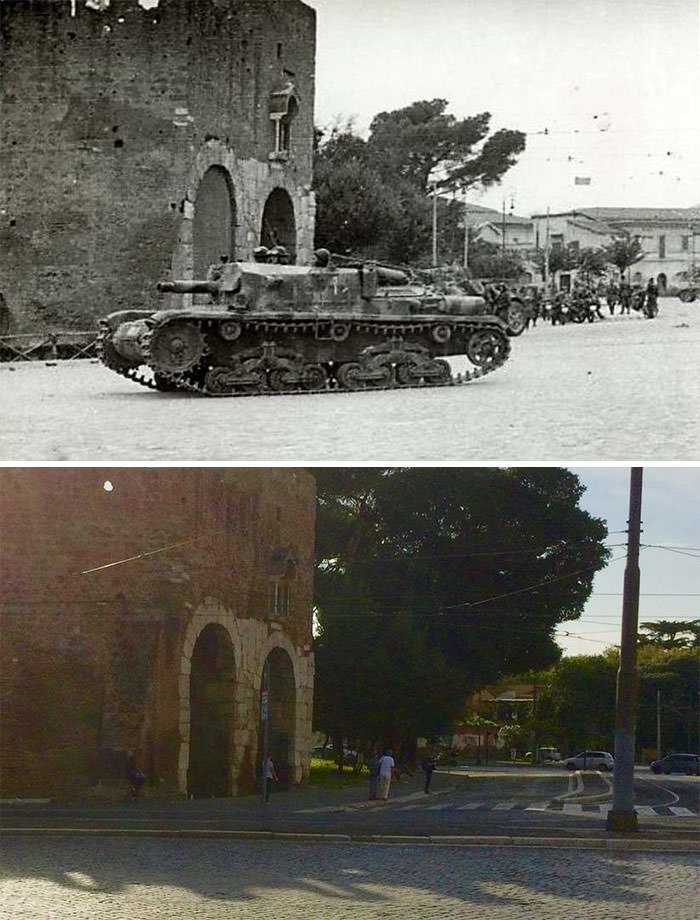
On 10 September 1943, Porta San Paolo was the scene of the last attempt by the Italian army to avoid the German occupation of Rome On the evening of the 9th, the 21st Infantry Division "Granatieri di Sardegna" moved towards the center, engaging in fierce fighting on the Via Laurentina (Tre Fontane locality), around the Exposition Hill (current EUR district) and Forte Ostiense. The German troops marched on the Via Ostiense, towards the heart of Rome. Despite the overwhelming numerical superiority and armament of the enemy, the walls of Porta San Paolo became a defensive bulwark of resistance, protected by barricades and vehicle carcasses. The grenadiers also fought here with courage, along with the numerous civilians. Before photo: ComunediRoma, after photo: StuartSW6.


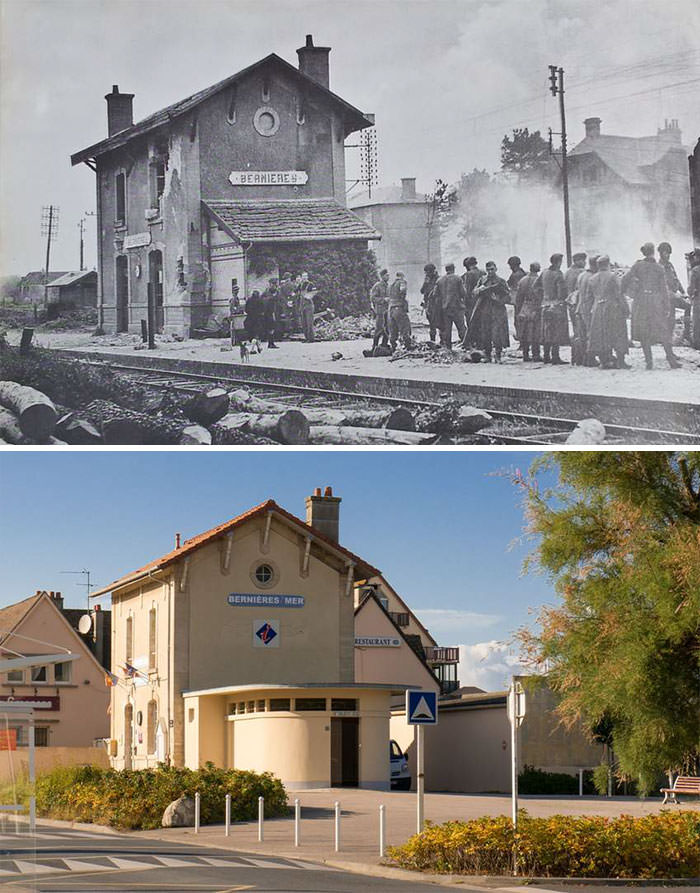
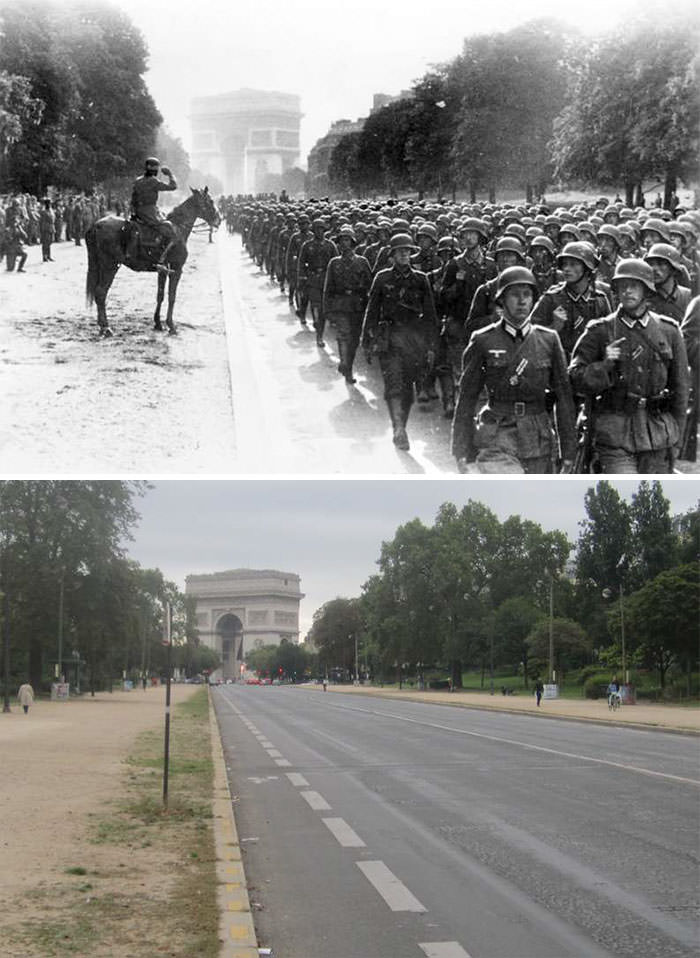
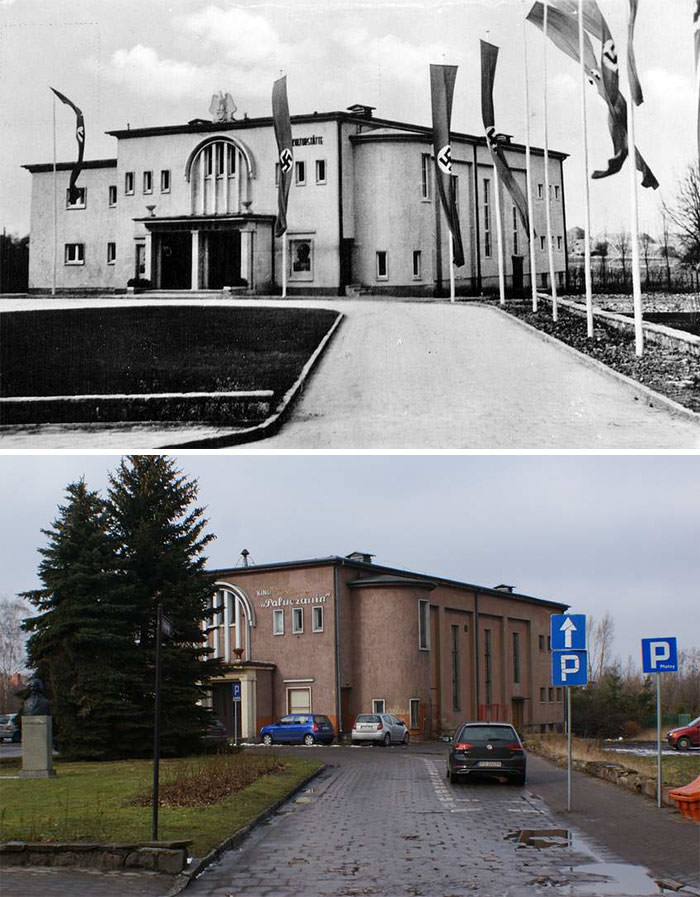
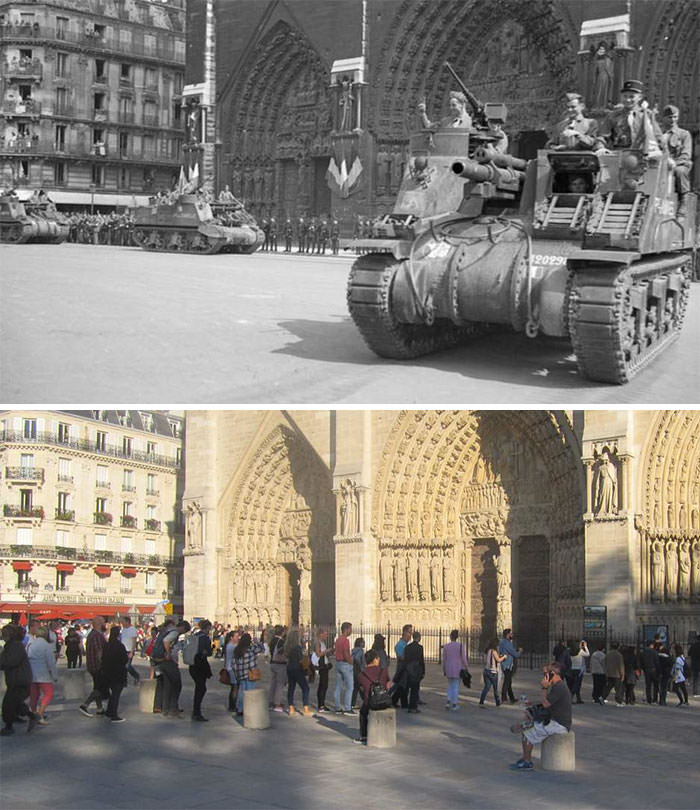
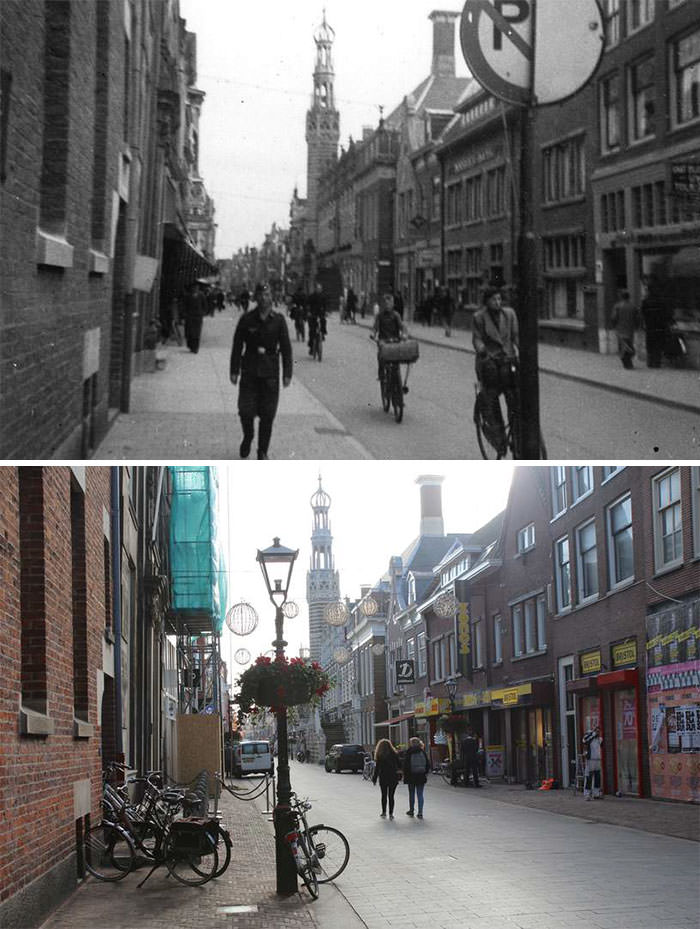
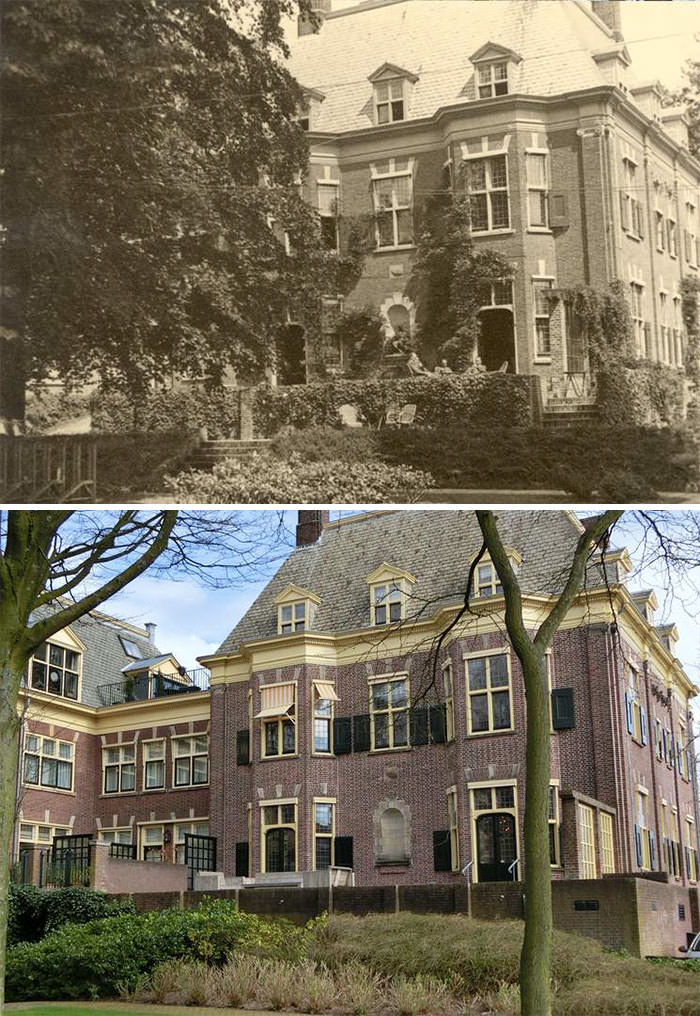
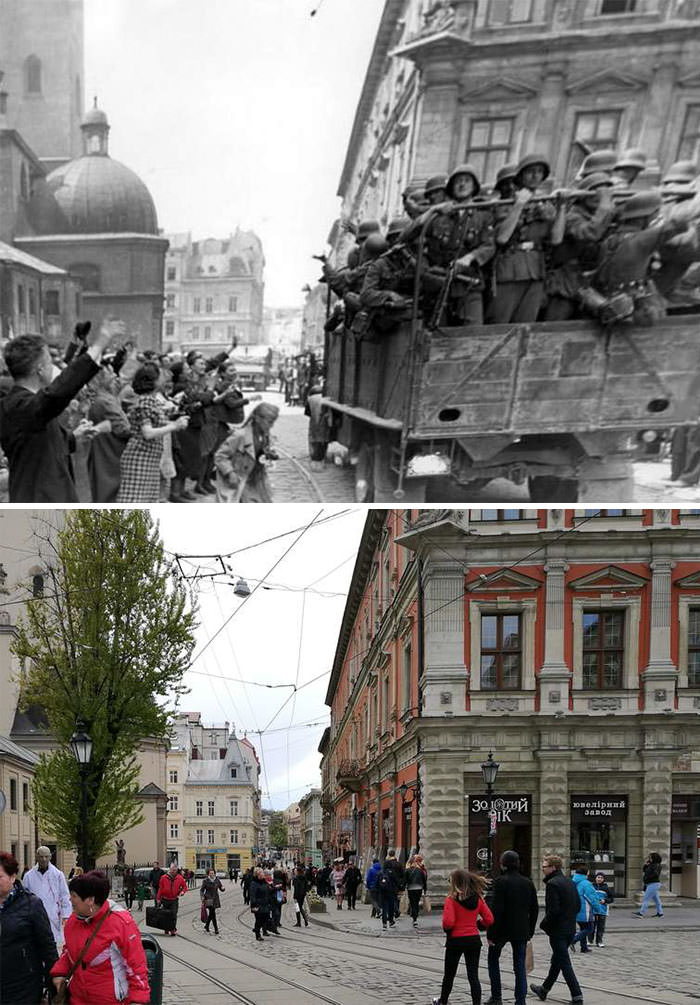
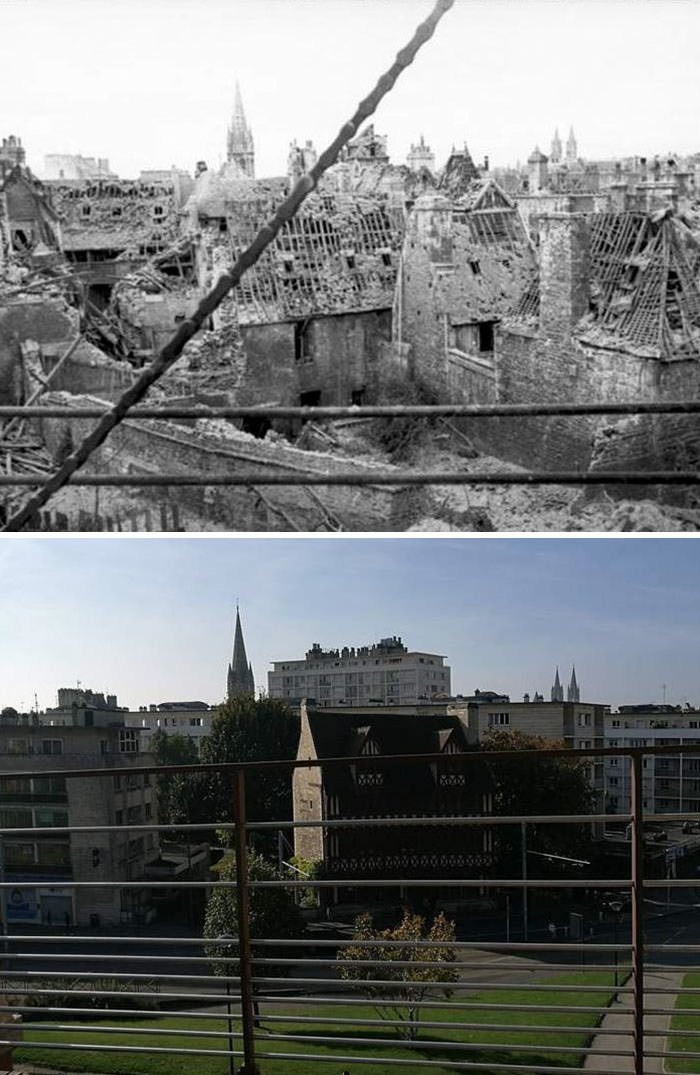
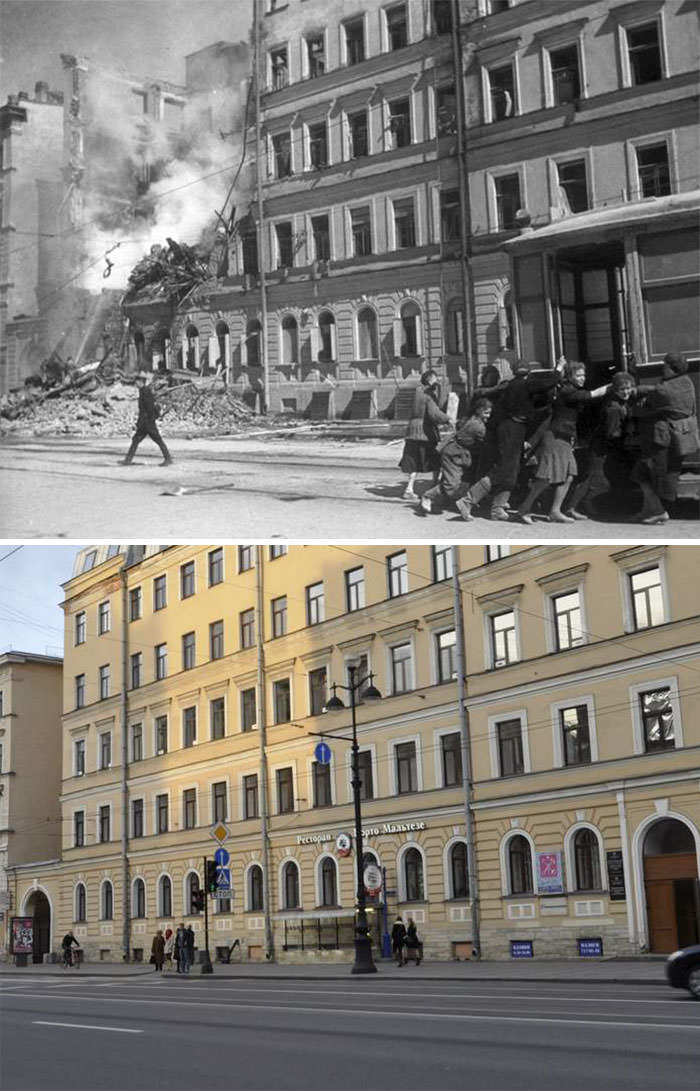
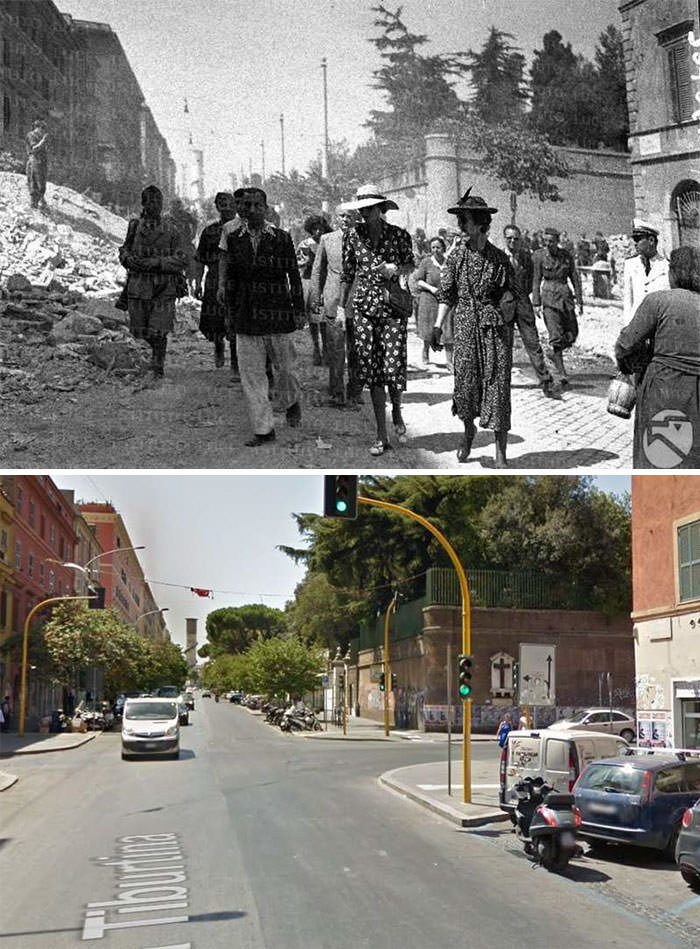
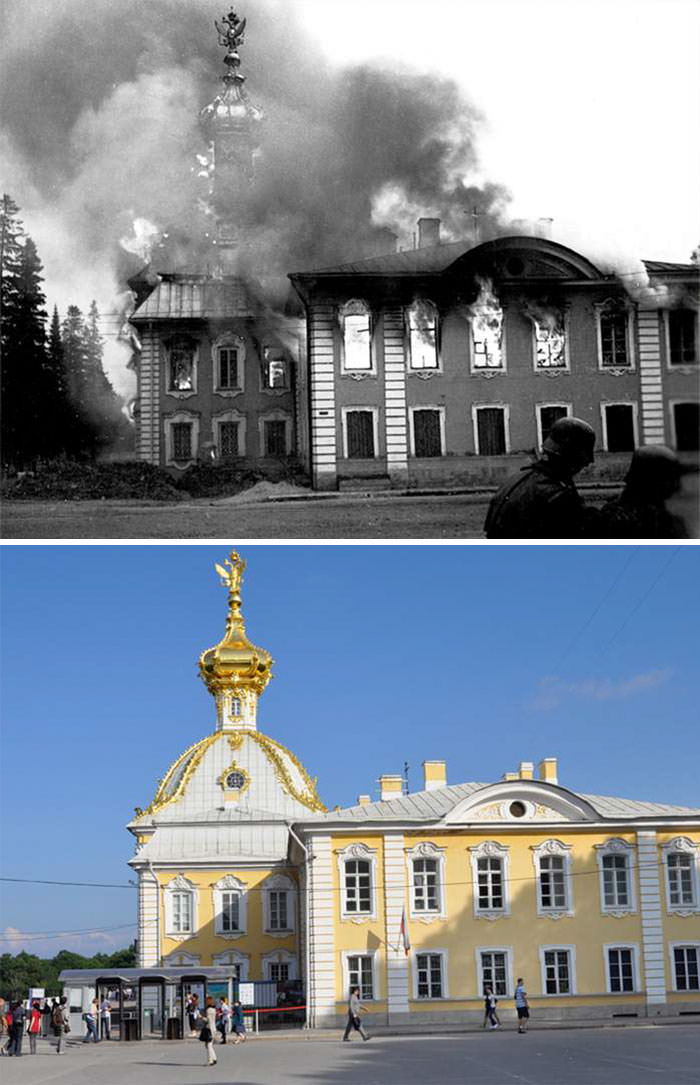
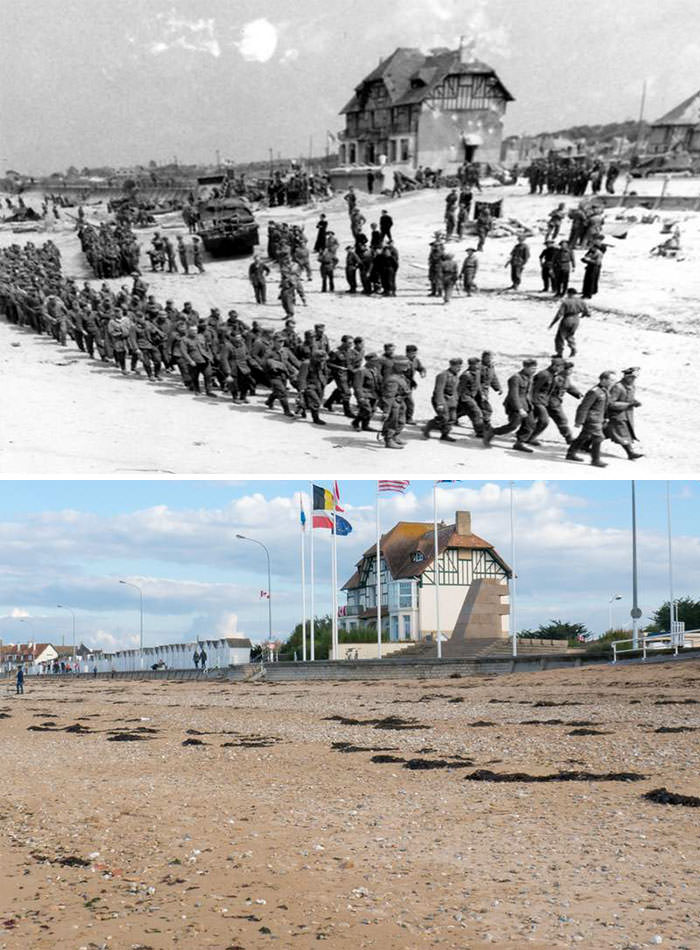
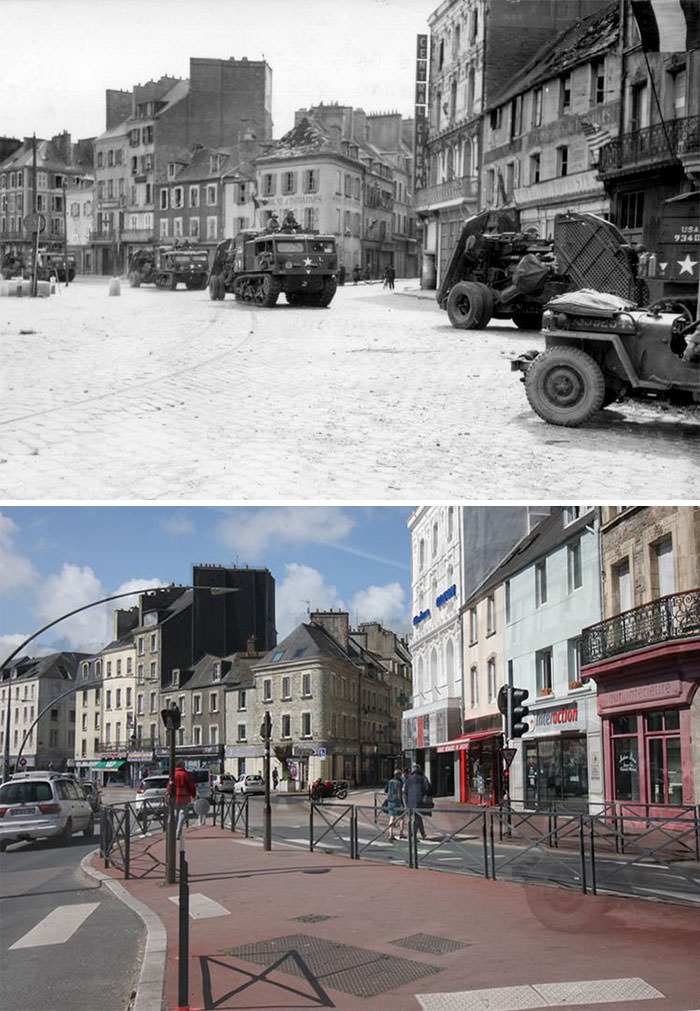
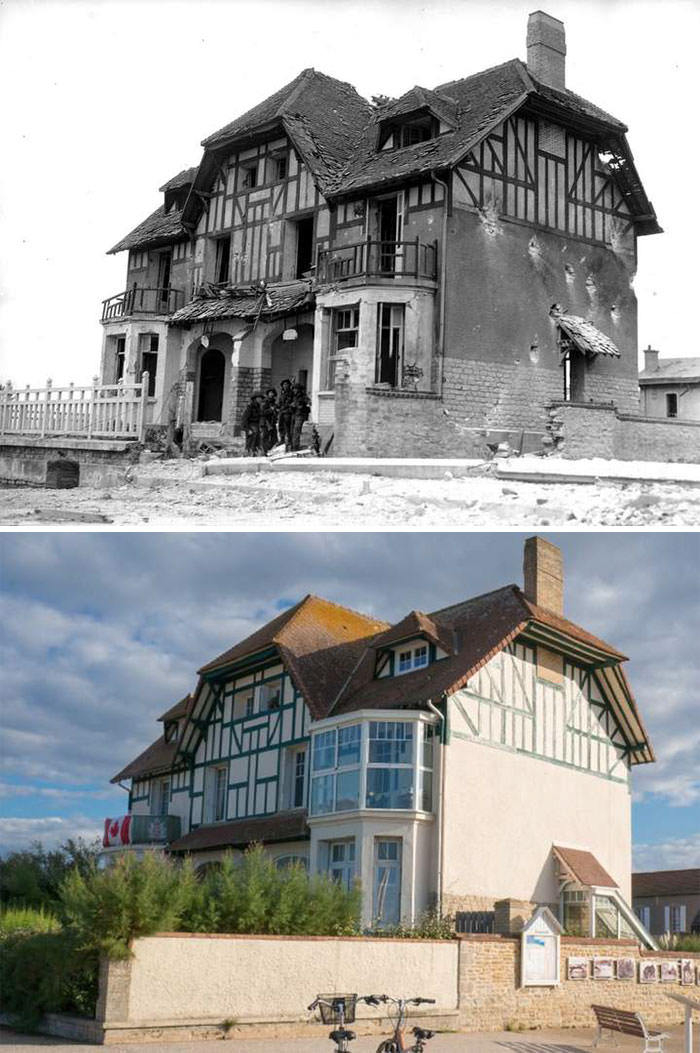
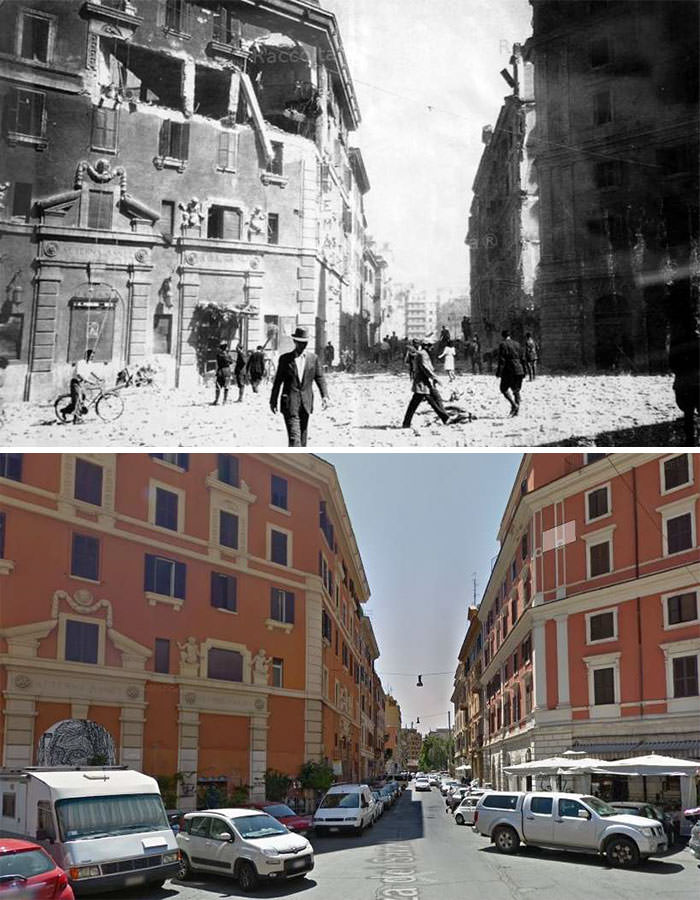
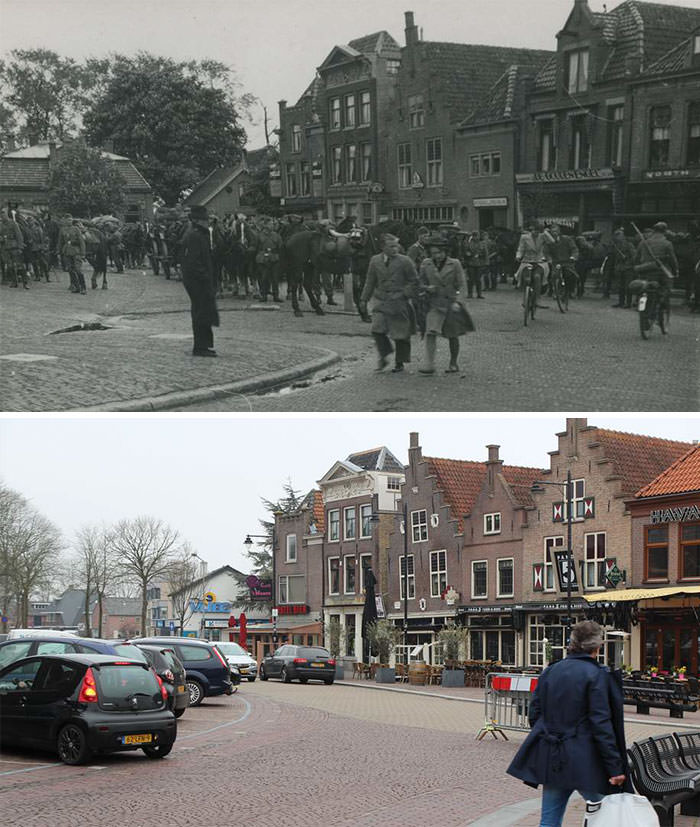
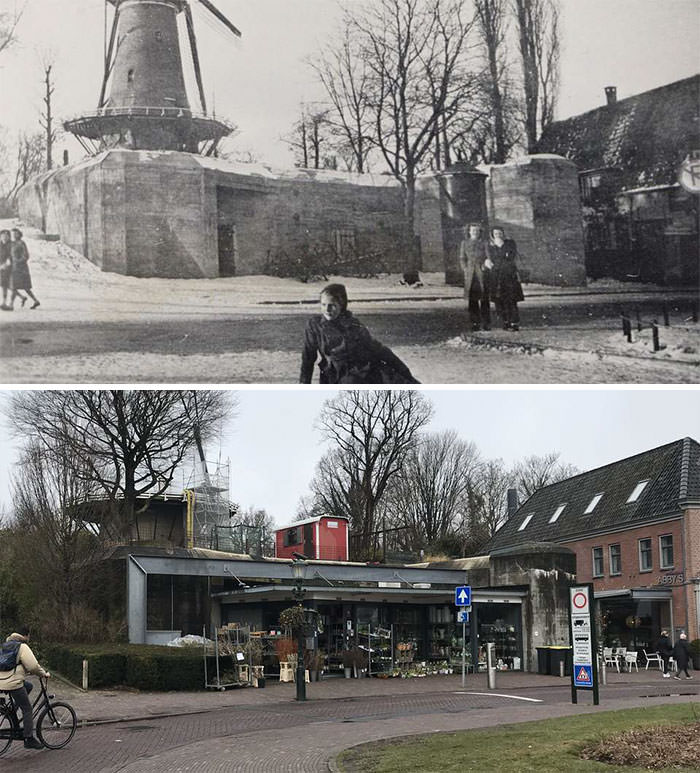
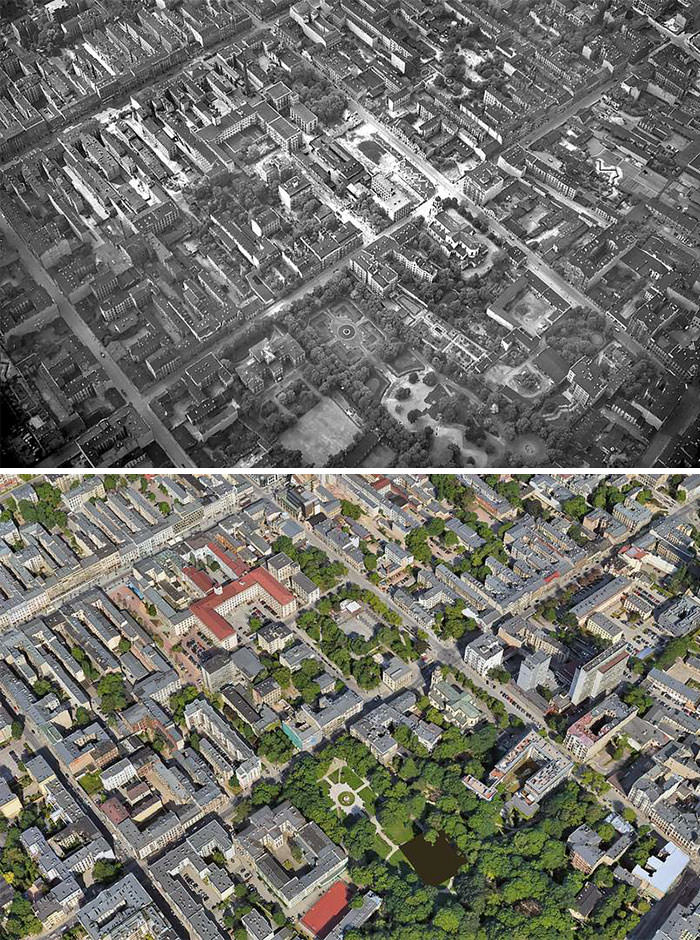
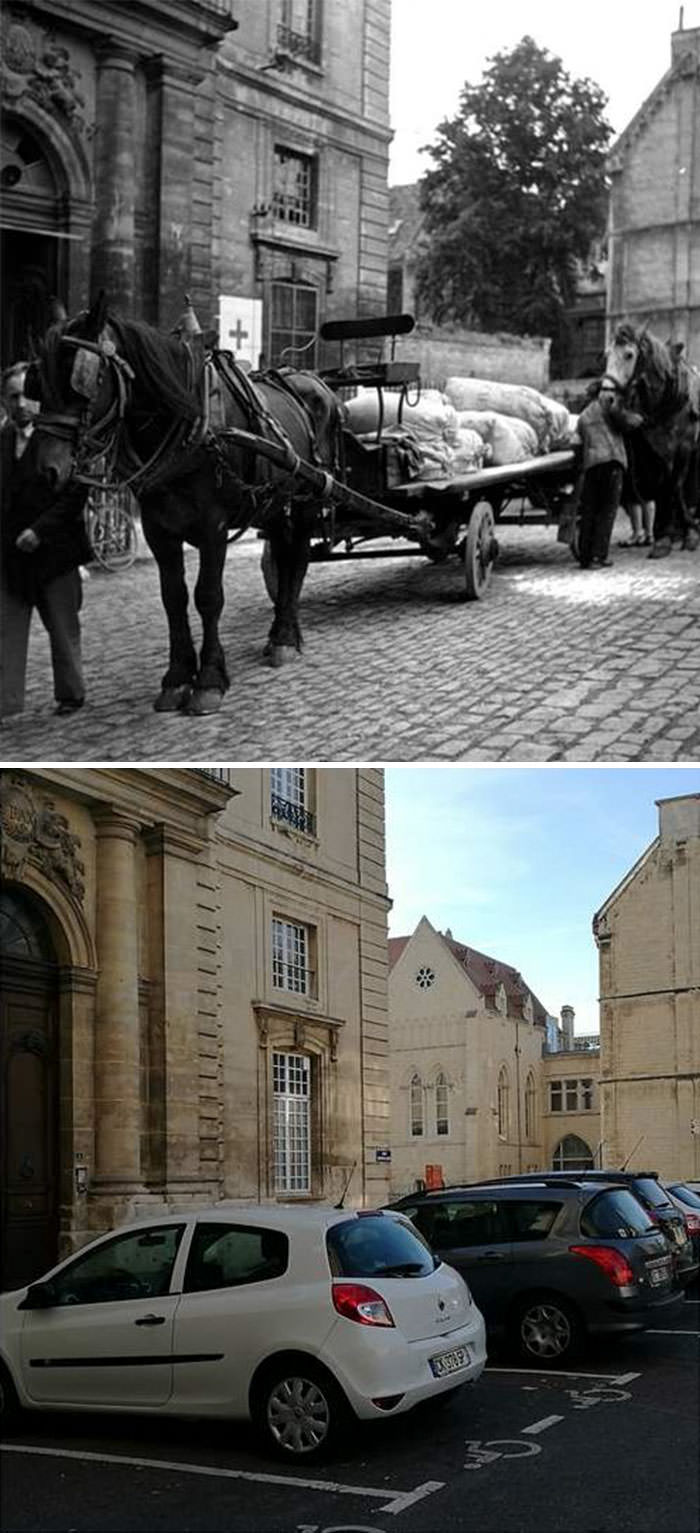
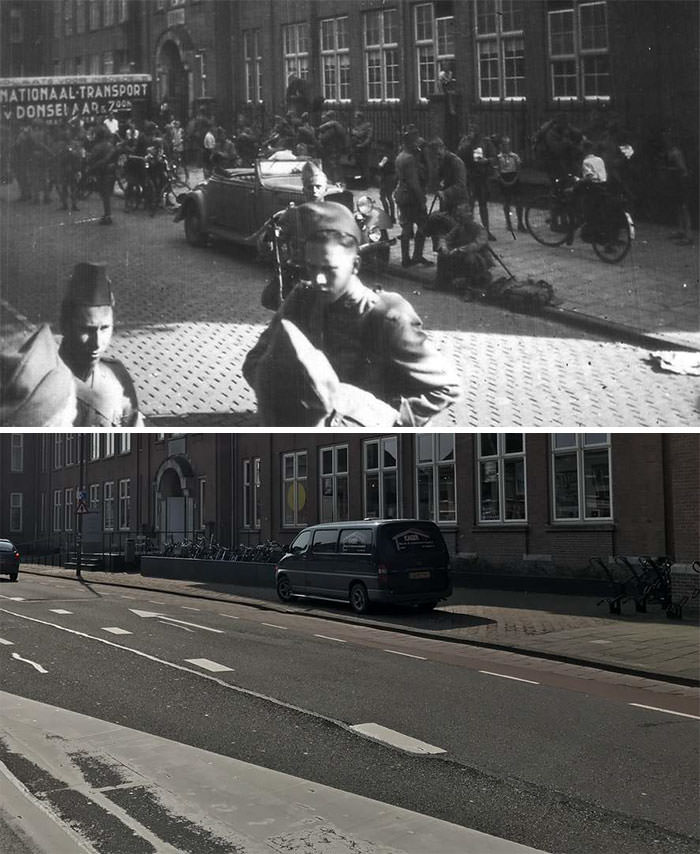
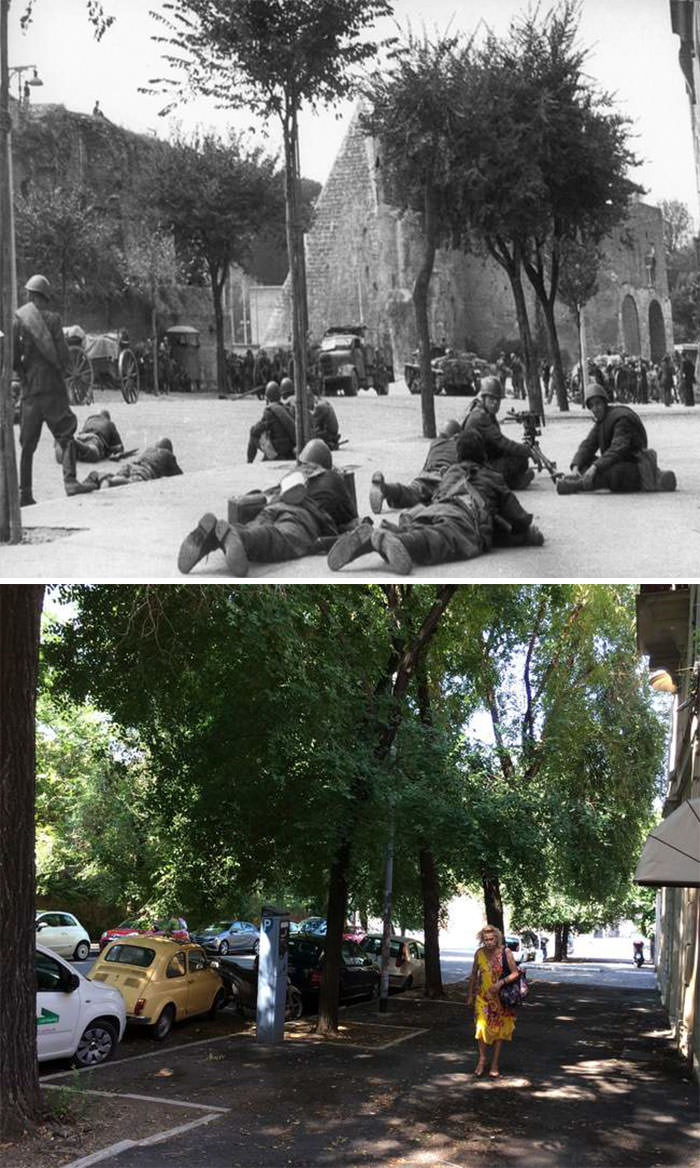

It used to be on fire
they destroyed history by removing the fire! 🤣